Social systems
Optimal diversification strategies in the networks of related products and of related research areas
Aamena Alshamsi et al., Nat. Commun. 9 1328 (2018)
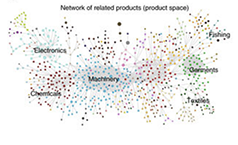 The probability that a region will develop a particular research activity increases with the number of similar activities in neighbouring regions. Here the authors analyse diffusion strategies and show that it is not only important to know which activities to target but also when to target them.
The probability that a region will develop a particular research activity increases with the number of similar activities in neighbouring regions. Here the authors analyse diffusion strategies and show that it is not only important to know which activities to target but also when to target them.
Morphology of travel routes and the organization of cities
Minjin Lee et al., Nat. Commun. 8 2229 (2017)
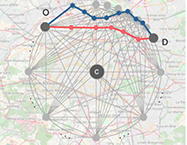 The street networks of cities may be viewed as complex networks with evolving structure. Here, the authors investigate the shape of travel routes in 92 cities and define a metric called inness, they show which reveals connections between common urban features in cities with similar inness profiles, correlating with their stage of urban development as measured by a series of socio-economic and infrastructural indicators.
The street networks of cities may be viewed as complex networks with evolving structure. Here, the authors investigate the shape of travel routes in 92 cities and define a metric called inness, they show which reveals connections between common urban features in cities with similar inness profiles, correlating with their stage of urban development as measured by a series of socio-economic and infrastructural indicators.
Universal model of individual and population mobility on diverse spatial scales
Xiao-Yong Yan et al., Nat. Commun. 8 1639 (2017)
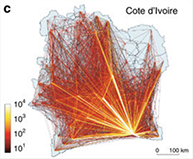 Understanding and accurate prediction of human mobility is of increasing importance, but a universal framework is lacking. Here, the authors develop a unified model, which, by combining memory effect and population-induced competition, enables accurate prediction of both individual and population mobility on diverse spatial scales based on population distribution only.
Understanding and accurate prediction of human mobility is of increasing importance, but a universal framework is lacking. Here, the authors develop a unified model, which, by combining memory effect and population-induced competition, enables accurate prediction of both individual and population mobility on diverse spatial scales based on population distribution only.
Diffusion of treatment in social networks and mass drug administration
Goylette F. Chami et al., Nat. Commun. 8 1929 (2017)
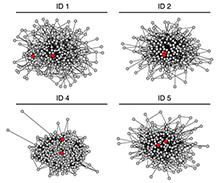 The success of mass drug administration depends on the distributors’ contact and engagement with members of their communities. Using data of deworming treatment distribution from Ugandan villages, the authors here demonstrate that community medicine distributors with tightly-knit friendship connections achieve the greatest reach and speed of coverage, suggesting that clustering should be considered when planning large-scale treatment campaigns.
The success of mass drug administration depends on the distributors’ contact and engagement with members of their communities. Using data of deworming treatment distribution from Ugandan villages, the authors here demonstrate that community medicine distributors with tightly-knit friendship connections achieve the greatest reach and speed of coverage, suggesting that clustering should be considered when planning large-scale treatment campaigns.
Control of finite critical behaviour in a small-scale social system
Bryan C. Daniels et al., Nat. Commun. 8 14301 (2017)
 Proximity of social systems to criticality can facilitate large-scale social changes and might be advantageous under changing conditions, but it also entails reduced robustness. Here, the authors analyse fight size distributions in a macaque society and find not only that it sits near criticality, but also that the distance from the critical point is tuneable through adjustment of individual behaviour and social conflict management.
Proximity of social systems to criticality can facilitate large-scale social changes and might be advantageous under changing conditions, but it also entails reduced robustness. Here, the authors analyse fight size distributions in a macaque society and find not only that it sits near criticality, but also that the distance from the critical point is tuneable through adjustment of individual behaviour and social conflict management.
Exercise contagion in a global social network
Sinan Aral and Christos Nicolaides, Nat. Commun. 8 14753 (2017)
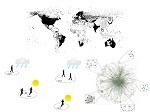 Some argue that health-related behaviours, such as obesity, are contagious, but empirical evidence of health contagion remains inconclusive. Here, using a large scale quasi-experiment in a global network of runners, Aral and Nicolaides show that this type of contagion exists in fitness behaviours, and that this contagiousness varies with the relative activity and gender relationships between friends. These results can be explained by the Embeddedness and Structural Diversity theories of social contagion, but not by the Complex Contagion theory.
Some argue that health-related behaviours, such as obesity, are contagious, but empirical evidence of health contagion remains inconclusive. Here, using a large scale quasi-experiment in a global network of runners, Aral and Nicolaides show that this type of contagion exists in fitness behaviours, and that this contagiousness varies with the relative activity and gender relationships between friends. These results can be explained by the Embeddedness and Structural Diversity theories of social contagion, but not by the Complex Contagion theory.
Pathways towards instability in financial networks
Marco Bardoscia et al., Nat. Commun. 8 14416 (2017)
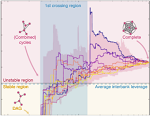
Inferring personal economic status from social network location
Shaojun Luo et al., Nat. Commun. 8 15227 (2017)
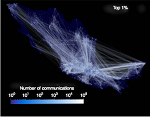
Returners and explorers dichotomy in human mobility
Luca Pappalardo et al., Nat. Commun. 6, 8166 (2015)

Understanding congested travel in urban areas
Serdar Çolak et al., Nat. Commun. 7 10793 (2016)
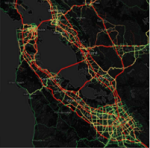
Social learning strategies modify the effect of network structure on group performance
Daniel Barkoczi and Mirta Galesic, Nat. Commun. 7 13109 (2016)

Topological data analysis of contagion maps for examining spreading processes on networks
Dane Taylor et al., Nat. Commun. 6 7723 (2015)
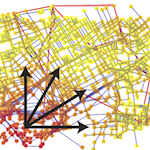 Social and biological contagions are influenced by the spatial features of the underlying network. In modern contagions, the existence of long-range edges - such as airline transportation - must be also taken into account. Here, Taylor et al. introduce an approach based on the analysis of topological data athat incorporates these long-range connections and that can be used to help modelling, forecasting and controlling the spreading processes involved in such contagions.
Social and biological contagions are influenced by the spatial features of the underlying network. In modern contagions, the existence of long-range edges - such as airline transportation - must be also taken into account. Here, Taylor et al. introduce an approach based on the analysis of topological data athat incorporates these long-range connections and that can be used to help modelling, forecasting and controlling the spreading processes involved in such contagions.

